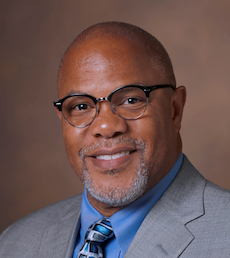Although more than 94 percent of U.S. pediatricians use an EHR, little has been known about how much time they spend with this vital tool and how use varies by subspecialty. A new study encompassing 44 percent of U.S. pediatricians published in Pediatrics pinpoints an average of 16 minutes using the EHR per outpatient encounter.
This includes work the pediatrician may do in the days following the visit, before officially closing out the encounter.
“Our study draws on a wealth of data to add to the understanding of documentation burden for today’s clinicians,” said Kevin Johnson, M.D., Informatician in Chief at Vanderbilt University Medical Center and a professor of pediatrics. “We were able to break out various EHR tasks, shedding light on opportunities to improve these systems and their associated workflows.”
Johnson collaborated on the study with Marc Overhage, M.D., the former chief medical informatics officer at Cerner Corporation. (Overhage is currently with the Alliance for Cell Therapy Research).
Tracking Keystrokes and Mouse Clicks
The study used data from over 20 million patient encounters involving almost 30,000 pediatricians. Cerner EHR log files were examined from 417 U.S. health systems for all of 2018.
By examining time between computer keystrokes and mouse clicks/movements, the investigators were able to distinguish work in the EHR from times when records may have sat idly open while the clinician-user turned to other tasks. EHR notes could have been entered directly, written and scanned, or dictated and transcribed.
“We were able to break out various EHR tasks, shedding light on opportunities to improve these systems.”
They classified EHR work into 13 categories, with chart review and documentation (62 percent) and ordering (13 percent) accounting for the greatest time. Although chart review and documentation accounted for the same amount of activity found in previous studies, the Vanderbilt/Cerner study found that chart review accounted for half of that time (31 percent).
These data suggest opportunities to improve the processes of entering and searching for patient data within the EHR, including emerging technologies such as voice commands to retrieve chart summary information and mobile versions of the EHR.
“Usage data of this sort provide an important set of metrics against which we can compare new EHR innovation,” Johnson said.
Subspecialty Variations
While average time per encounter was 16 minutes for pediatricians as a whole (with 12 percent of this time spent after hours), the average varied widely across pediatric subspecialties, from pediatric surgery at 6.82 minutes to pulmonology at 17.16 to rheumatology at 26.41.
A previous descriptive study using Cerner EHR log files found that physicians serving adult patients also spent an average 16.23 minutes per patient encounter working in the EHR.
“With everyone in this study using Cerner’s software,” Johnson noted, “the wide variation that we found within each subspecialty is perhaps surprising and suggests significant opportunity for more efficient use of the EHR as presently configured.”
Improving Quality of Care
“The time physicians devoted to chart review may be early evidence of providers using the EHR to improve the care they deliver,” the authors wrote. Johnson hopes the EHR active times by subspecialty reported in this study can serve as a benchmark for health system leadership, providers, payers and policymakers.
“While it’s generally acknowledged that the EHR can support improved health care quality and safety,” Johnson said, “there’s widespread concern that documentation requirements, and perhaps the sometimes-unwieldy configuration of the EHR itself, are needlessly sapping time from clinicians, time that could be better spent engaging patients and family members.”






